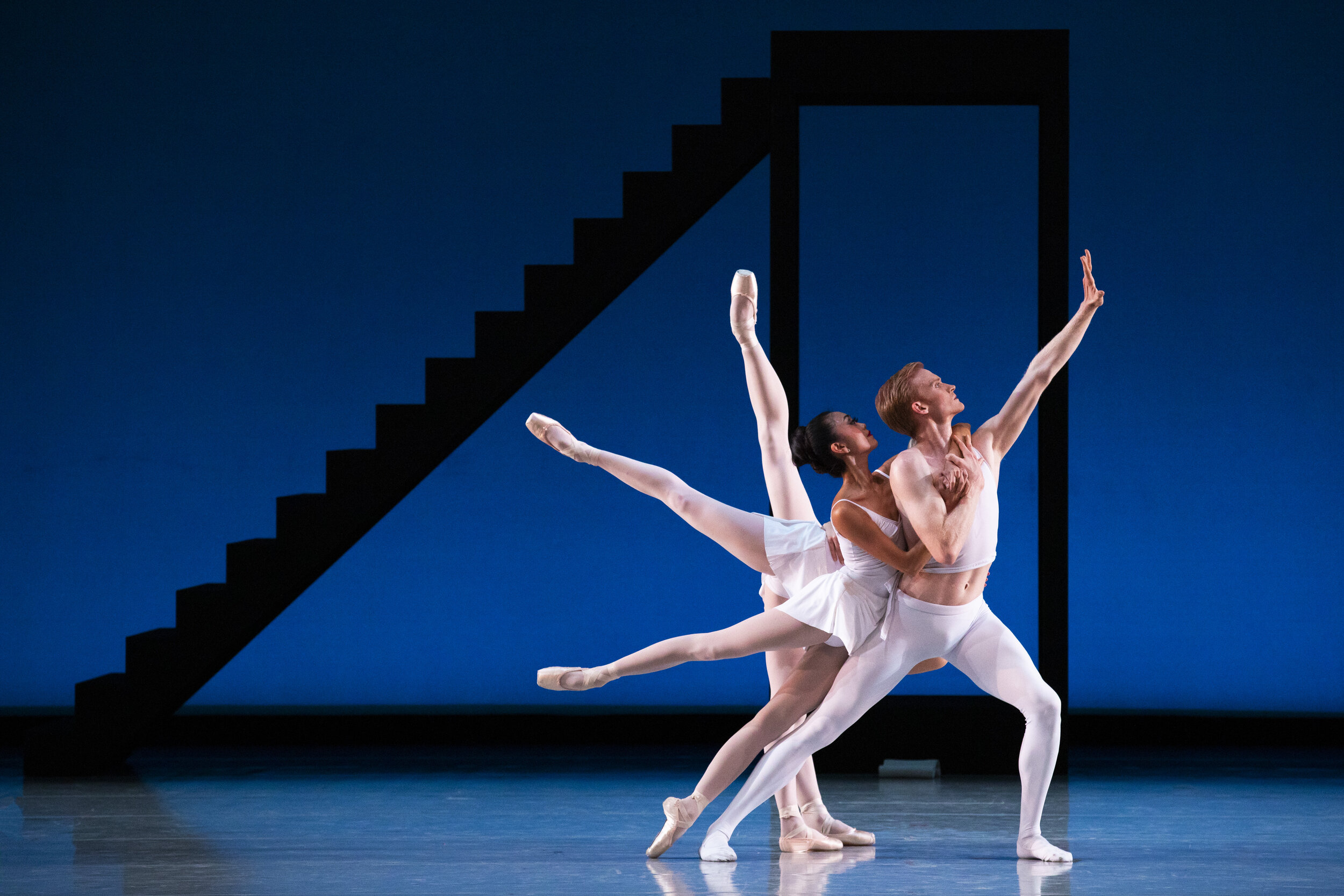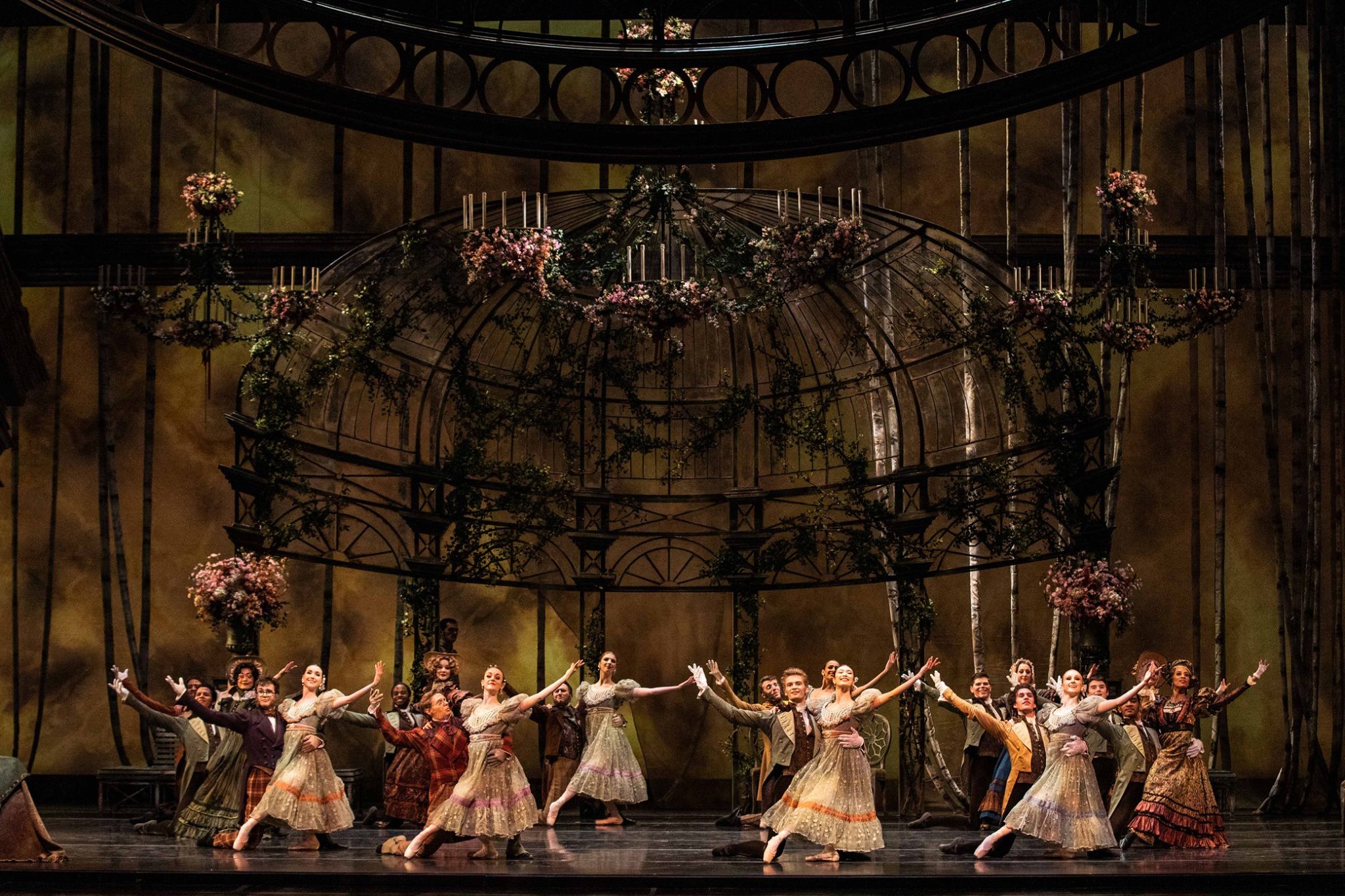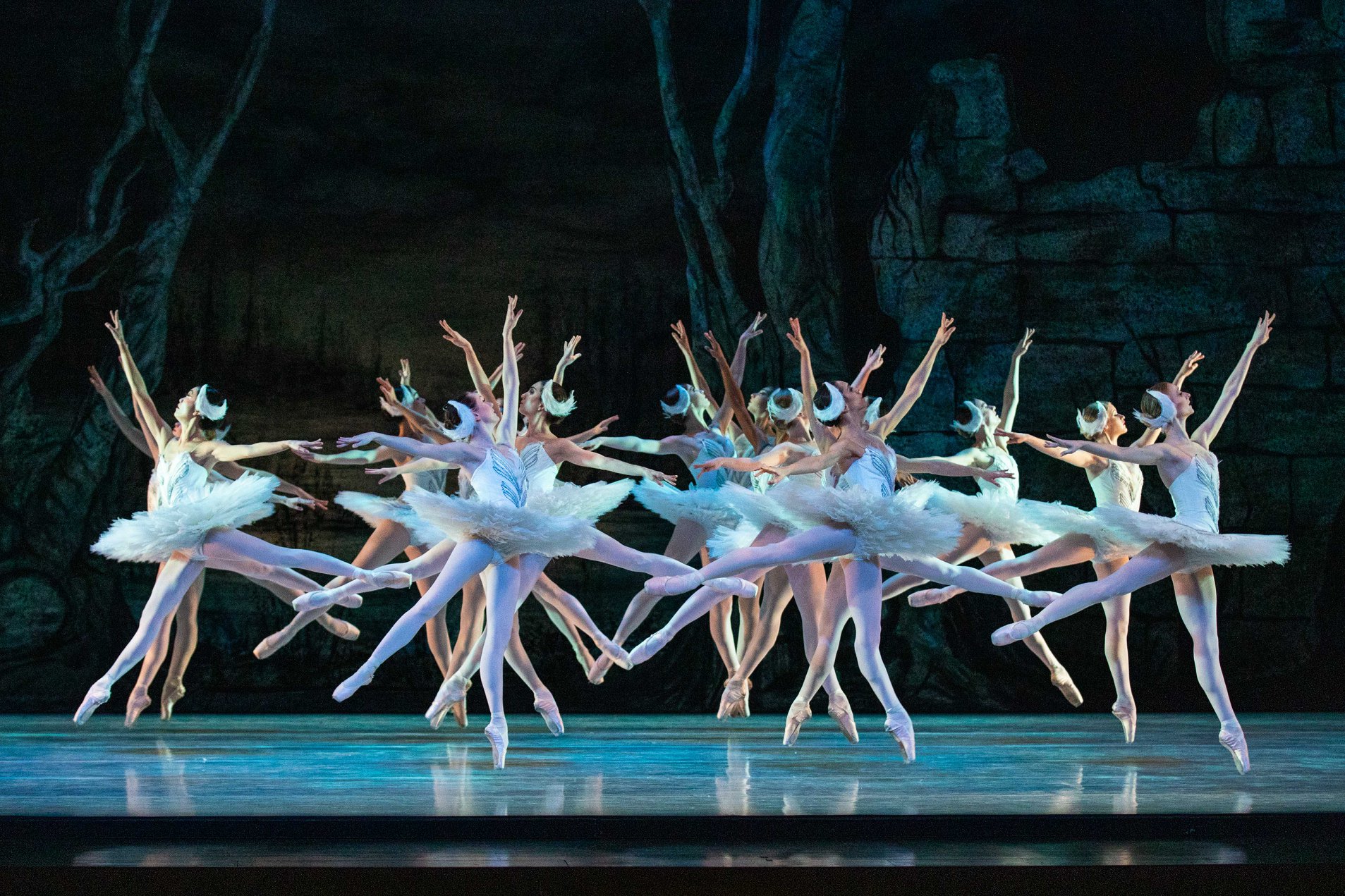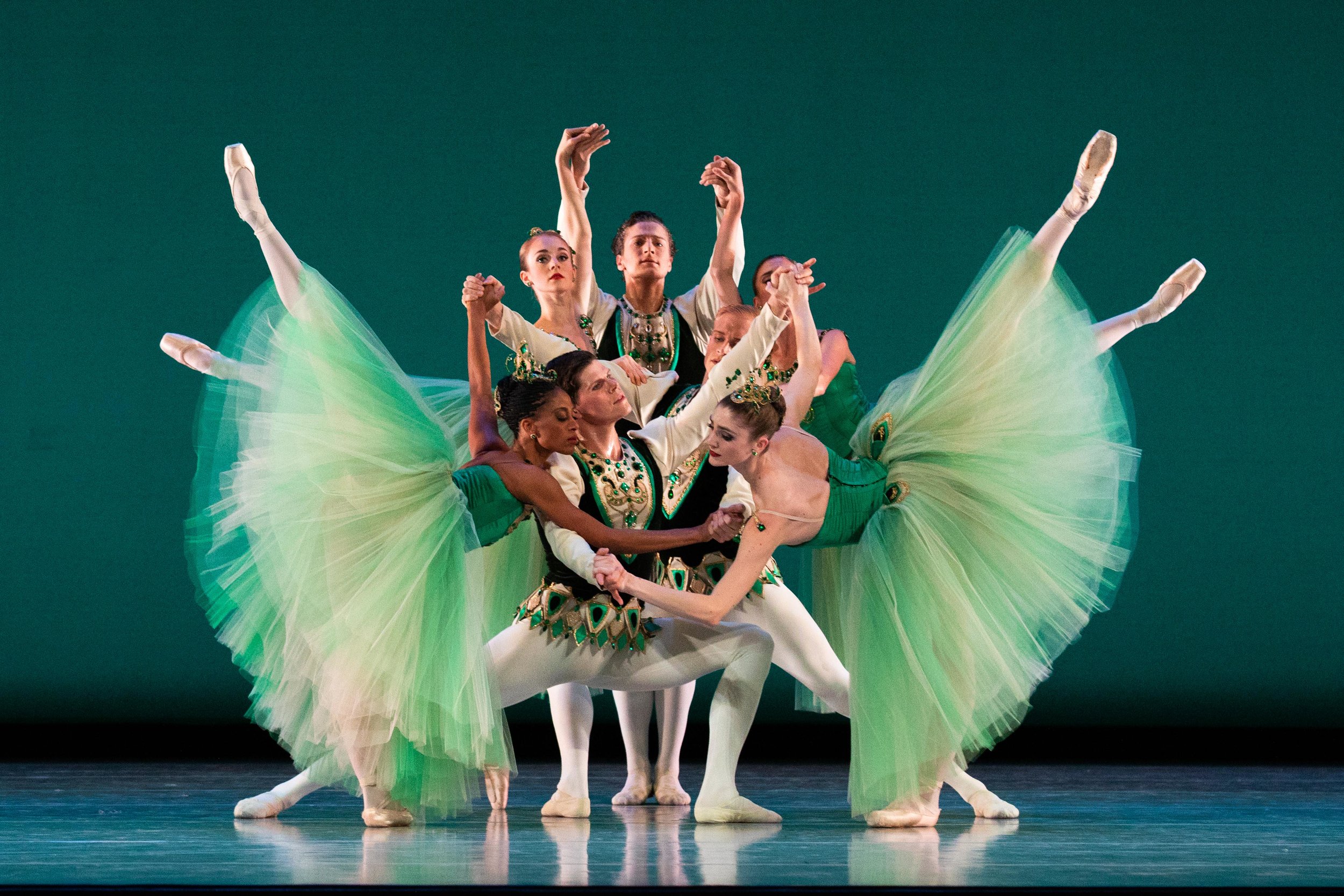For the premiere of its 56th season, Ballet West is presenting a mammoth historic revival that also offers - and asks of audiences - something acutely new and different. Assembled for the 110th anniversary of the iconic and incomparable company the Ballets Russes, the bill includes three of George Balanchine’s oldest works, created during the years he spent experimenting with the Ballets Russes under the direction of Sergei Diaghilev: Le Chant du Rossignol, Apollo, and The Prodigal Son.
The production, Balanchine’s Ballets Russes, is an impressive window to the inception of tools, images, and themes Balanchine would carry into the work he did throughout his lifetime. All of the flexion, angularity, layering of bodies, and familiar archetypes were evidently present even then, as were the first inklings of an ethos that would someday define an entirely new approach to ballet. These three one-act ballets are also an incredible view into the rich collaborative relationships fostered by the Ballets Russes, with opulent intricate costumes designed by Henri Matisse and Georges Rouault and scores by Igor Stravinsky and Sergei Prokofiev.
Ballet West’s casting for each ballet was gorgeous and precise. I especially enjoyed Adrian Fry, Katie Critchlow, Sayaka Ohtaki, and Beckanne Sisk in Apollo, and Hadriel Diniz opposite Katlyn Addison’s steely, nuanced Siren in The Prodigal Son.
The three ballets were presented sequentially, in the order of their creation dates, which allowed the audience to trace the progressing results of Balanchine’s experimentation and collaboration. While each ballet was a stunning and cohesive achievement in its own right, each is now also made exponentially more powerful and relevant both through juxtaposition and a new ethos of presentation.
The sparks that made this program truly noteworthy were fueled by its endeavor to be not just a series of beautiful ballets rich in legacy and refined in craft but also an ambitious, eye-opening, and socially conscious course of study.
A bulk of this attention fell to the revival of Le Chant du Rossignol. Bringing back this lost piece of history demanded a precise and nuanced balancing act to recover its essential charm and beauty, as well as demonstrate its influence as Balanchine’s first ever work for the Ballets Russes – without the undertones of racist exoticism that infused the original.
Addressing the racial and cultural issues at play with even more up-front and earnest clarity than during the redux of The Nutcracker’s Chinese divertissement last year, Ballet West took an approach involving partnerships with multiple specialist and community collaborators to effect this modernized revival. The process was three-fold: a project of in-depth research and dialogue; concrete changes made in response to that work; and a campaign to provide enrichment, transparency, and accessibility for audiences.
Following extensive research done by the restaging team of Millicent Hodson and Kenneth Archer, who recovered existing knowledge of the original production, Ballet West invited leaders of the Asian American community, including Phil Chan, of the organization Final Bow for Yellow Face, and local arts advocate Max Chang, into the rehearsal process to begin a dialogue and develop a path forward. This was followed by further discussions with and feedback from local schools and the general public, prior to opening weekend.
It was wonderful to see Ballet West show up for this challenging, complex, and necessary conversation. It is also of utmost importance to note that Ballet West is responding to a pressure and cultural shift in the landscape that has been ongoing for some time now. The momentum begun and directed by dancers of color like Chan and his partner at Final Bow for Yellow Face, the New York City Ballet dancer Georgina Pazcoguin, may be attributed to the force now pushing companies across the country to expel outdated, harmful, or appropriative choreography in recent years. Final Bow’s website features a slew of information and resources for dancemakers looking to make more responsible choices and a pledge “committing [the signer] to speak up against Yellowface on our stages, and work[ing] to create more positive and nuanced representations of Asians in ballet.” Chan and Pazcoguin advise performing organizations in their re-staging of classic works, and, since 2017, have succeeded in gaining the pledges of nearly all major American ballet companies (information taken from the website and Instagram account of Final Bow for Yellowface).
In Le Chant du Rossignol, these efforts culminated in the elimination of choices in costuming, choreography, and characterization that were deemed the most problematic. Ballet West has enumerated several of these changes, including the choreographic replacement of caricatured hand movement, shuffling of the feet, and bobbing of heads, and also specific changes to the makeup design for all characters to eliminate traces of yellowface and exaggerated exoticism.
To me, these changes certainly appeared to result in a more respectful and educated perspective in performance. It felt less uncomfortable and upsetting than similar ballet productions I’ve attended previously. But, not being a member of the Chinese or Chinese American communities, it’s really not for me to say whether they went far enough in alleviating the damaging insensitivities of the past. I sincerely hope they did, so that those communities may feel seen, welcome, and respected.
The final key to making these efforts truly effective was in the transparency and resources that Ballet West offered their audience to create an experience that far surpassed mere entertainment; the audience was expected to learn something. A program note four times longer than any I’ve seen before, from artistic director Adam Sklute, doubled as a history lesson; a letter from restagers Hodson and Archer about their process gave insight into their arduous treasure hunt, complete with juicy details from mythic figures of ballet past; multiple panels in the lobby covered costume design, reconstruction in conversation with representation, and the history of Chinese railroad workers here in Utah; and a letter from Phil Chan of Final Bow for Yellowface articulated the need for these kinds of changes and his experience with the production process (there was also a pre-performance lecture that I sadly couldn’t make it to). Many of these resources are also available online - they are fascinating and I would highly encourage anyone to make time to peruse them and then to visit yellowface.org for further context on the critical work that Final Bow for Yellowface is doing.
It is incredible and exciting to see a company like Ballet West digging into and committing itself to a journey down this road. This performance was a very far cry from the experience I had just three years ago reviewing their production of Madame Butterfly for this publication, and I am grateful for the many voices inside of and outside this company that are pushing them into a new and better future.
I hope to count on Ballet West’s future endeavors (looking at you, Nutcracker Arabian and sundry gendered stereotypes) following suit – no longer feeling indebted to a self-serving and self-destructing nostalgia but instead examining, creating, and re-creating with respect, accountability, and transparency. This willingness to adapt without preciousness and engage audiences and communities in meaningful conversation will be a vital new way for Ballet West to stoke fresh interest, provide leadership in the arts, and keep its legacy alive and vibrant.
Ballet West’s Balanchine’s Ballets Russes continues through Saturday, November 2, with a matinee at 2 p.m. and a final performance at 7:30 p.m.
Emily Snow is a Denver native who now calls Salt Lake City home. She has most recently been seen performing with Municipal Ballet Co. and with Durian Durian, an art band that combines electronic music and postmodern dance.












